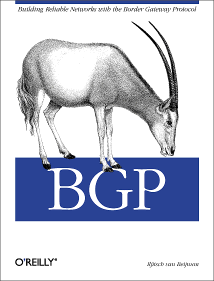
|

|

|
|
Home ·
BGP Expert Test ·
What is BGP? ·
BGP Vendors ·
Links ·
Archives ·
Books ·
My New BGP Book | ||
 (advertisement)
(advertisement)
| ||
|
RIPE 46 Monday - EOF (posted 2003-09-01)
MondayVoIPOn monday there were talks about voice over IP the whole day as part of the European Operator Forum (EOF). I had somewhat mixed feelings about this. On the one hand I'm pretty interested in VoIP, but I haven't done anything with it in practice so I was expecting to learn a few things. Unfortunately, many of the talks were way too detailed, explaining stuff like the old electromechanical switching mechanisms in the phone network. There was also lots of stuff on how to interconnect your VoIP stuff with the plain old telephone system. This could/should be interesting but I found it again too detailed. I guess I would have liked a smaller scale, more practical approach on how to call over the net and not immediately focus on the POTS network as I'm not going to get rid of my existing phone just yet.
SIP/H.323But some cool stuff: I got to know a little bit more about SIP vs H.323. Apps like Microsoft's Netmeeting use the ITU H.323 protocol family as their signalling protocol, but today's products are more inclined towards SIP, which is an IETF standard. Note that the actual voice packets are governed by a host of other protocols. Usually, it's even possible to call using an IP address without using SIP or H.323 on VoIP (Ethernet) phones. But a SIP server/proxy provides all the features that usually come from a PABX: implementing numbering plans, connecting to gateways, transferring calls, putting calls on hold, that kind of thing.There are now VoIP phones that cost about 60 - 75 dollars/euros and there is the free Asterisk "Open Source Linux PBX" software.
MPLS DoS traffic shuntIn the afternoon, there also was a presentation about using an MPLS DoS traffic shunt. (Also presented at NANOG.) This is basically similar to what I talk about in my anti- DoS article, but they use MPLS to backhaul the traffic to a location where there is a Riverhead anti-DoS filtering box and then push the traffic out to where it needs to go. The MPLS paths are automatically created when the right iBGP routes are present, but COLT (who implemented this) doesn't want it's customers to automatically enable this, the NOC must create the iBGP routes for this manually. Note that the reason this makes sense is that COLT has huge amounts of bandwidth and around 60 locations where they interconnect with other networks, but the Riverheads are way too expensive to buy 60 boxes.
|
